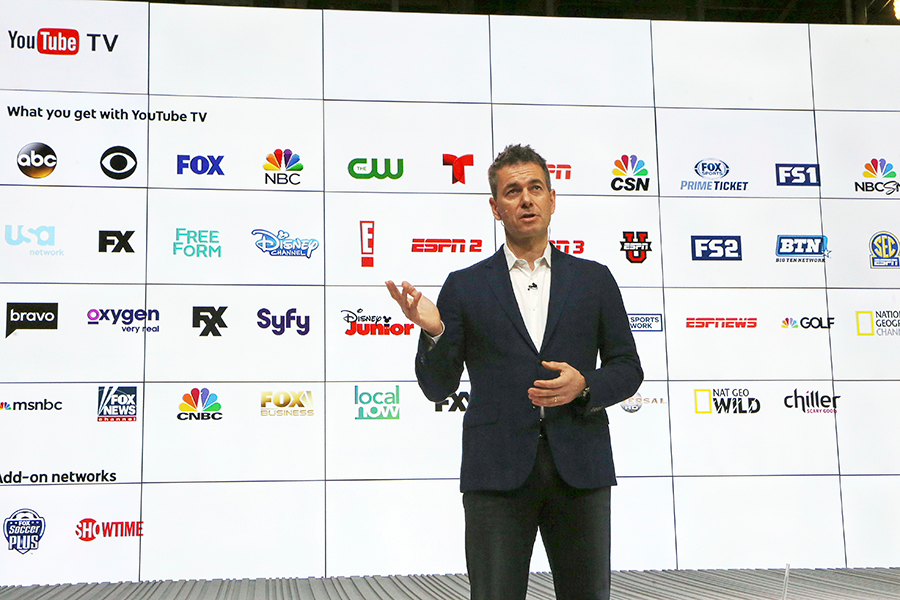Google courts young viewers with YouTube TV streaming service
Television networks may have a new avenue to reach viewers in the new era of digital videos, via YouTube.
The Google-owned company on Tuesday unveiled its new streaming service, dubbed YouTube TV. Set to launch in the next few months, YouTube TV subscription packages will allow users to live stream as many as 40 channels online, the company says.
Though online digital cable service is not a new idea, the tech giant's new program underscores the growing market drive to bridge the gap between traditional cable and network television offerings and the newer arena of streaming content, as audiences – especially younger audiences – shift away from traditional programming.
"Millennials love great TV content, but what we've seen is they don't want to watch it in the traditional setting," YouTube chief executive Susan Wojcicki told reporters at an event in Los Angeles.
YouTube TV will compete in an increasingly crowded market of digital cable subscription services, with Dish, Sony, and AT&T all offering their own internet cable alternatives, targeting the rising number of “cord cutters” – viewers who have dropped pricier, traditional cable and satellite packages or never signed up in the first place. Charging between roughly $20 to $70 a month, the three companies combined had about 1.5 million customers in 2016, according to the Associated Press.
But YouTube might have a slight advantage. The US video-sharing website has garnered more than a billion users since its founding in 2005, with “more 18-34 and 18-49 year-olds than any cable network in the United States,” the company’s website says. Each day, the videos hosted on its platform draw millions of hours of watching and billions of views, more than half of which come from mobile devices.
With the ability to stream live across all kinds of devices, including smartphones and internet-connected TVs, YouTube’s new digital cable subscription service is tailored to its user base. Featuring channels from networks such as ABC, CBS, Fox, and NBC, the package, which charges $35 a month for six accounts, also offers unlimited cloud space for DVR recording and the ability to watch original programming from YouTube video creators on YouTube Red. It also incorporates the latest technology from Google, including the ability to voice-search TV shows through a Google Home device.
“We’re bringing the best of the YouTube experience to live TV,” Christian Oestlien, YouTube’s product management director, wrote in a company blog. “It’s live TV designed for the YouTube generation – those who want to watch what they want, when they want, how they want, without commitments.”
The new service is also an opportunity for Google to grow YouTube into a bigger contributor to its business. In 2016, the digital video subsidiary emerged as a primary profit driver contributing to Google parent company Alphabet's $26.06 billion dollar revenue.
The launch of YouTube TV might also signal a shift in the platform’s relationship with traditional cable networks. For years, online video services have been gradually replacing TV. YouTube’s chief business officer Robert Kyncl argued at CES 2016 that, by 2020, digital video will be the single biggest way Americans spend their free time, as the Monitor reported at the time.
"Even though we are in this golden age of content, the current TV age isn't doing it justice," Neal Mohan, YouTube's chief product officer, told Reuters. "We feel we are in a great position to reinvent the way TV works."
This report includes material from the Associated Press and Reuters.









